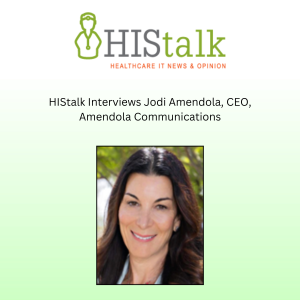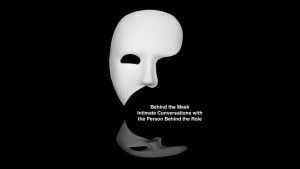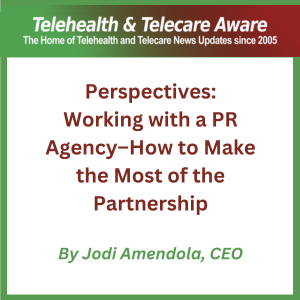
by Administrator | Dec 2, 2024 | News
Check out these recent interviews with Amendola’s founder Jodi Amendola that delve into what’s trending in healthcare, health tech and life sciences PR and marketing, including hot tips on what it will take to succeed in today’s challenging market.
 ➡ HISTalk interview with Mr. HISTalk
➡ HISTalk interview with Mr. HISTalk
 ➡ Behind the Mask podcast with Ed Marx
➡ Behind the Mask podcast with Ed Marx
 ➡ What’s My Tagline podcast with Carol Flagg
➡ What’s My Tagline podcast with Carol Flagg
 ➡ Digital Health Insights podcast with Frank Cutitta
➡ Digital Health Insights podcast with Frank Cutitta
 ➡ Perspectives: Working with a PR Agency–How to Make the Most of the Partnership
➡ Perspectives: Working with a PR Agency–How to Make the Most of the Partnership

by Yancey Casey | Nov 13, 2024 | Blog
When these two titans join forces, your brand can’t lose
In the fast-paced world of PR, two heavyweights reign supreme – thought leadership and content marketing. These two strategies are often seen as the Batman and Robin of the marketing world, each with its unique strengths, but unbeatable when working together. If your brand is looking to build awareness, nurture relationships, and drive sales, it’s essential to understand how these two superhero strategies differ and why they should join forces.
The Power of Thought Leadership: Be the Batman of Your Industry
Thought leadership is like Batman – the brooding, strategic hero who relies on intellect and influence. It’s all about positioning your business or executives as the experts in your field. Thought leadership doesn’t push products; it pushes ideas. It starts conversations by offering groundbreaking insights, deep industry knowledge, and forward-thinking solutions to industry-wide challenges.
Think of thought leadership as the superhero who swoops in with a compelling, well-researched article that makes people sit up and say, “I never thought about it that way.” It’s designed to build trust and credibility over time, often appearing in high-profile publications or at industry events. The goal is to create a direct connection with the audience through valuable information, not a sales pitch.
This approach is particularly powerful for companies with complex solutions or those trying to establish themselves as visionary leaders in their market. Like Batman’s utility belt, thought leadership is packed with research, statistics, and innovative ideas that can help a business make an unforgettable first impression.
The Charm of Content Marketing: Robin Leaps into Action
If thought leadership is Batman, content marketing is Robin – the energetic, engaging sidekick who’s quick to jump into action. Content marketing focuses on building relationships with customers through consistent, valuable content like blog posts, social media updates, and newsletters. It’s a top-down communication method, designed to inform and engage the target audience with relevant information that positions the company as the go-to solution for their needs.
While thought leadership is about starting big-picture conversations, content marketing is about nurturing existing relationships. The tone is often less formal and more focused on helping the audience solve specific problems. Whether you’re targeting businesses (B2B) or consumers (B2C), content marketing aims to deliver useful, actionable content that keeps your brand top-of-mind when the time comes for customers to act.
The secret weapon here? Consistency. By regularly producing engaging content, you’re keeping the conversation alive, and that familiarity builds trust. Over time, this tactic turns prospects into customers, and customers into loyal advocates.
The Dynamic Duo: Better Together
While thought leadership and content marketing can each stand alone, they become an unstoppable force when used together. Thought leadership gets you noticed and sparks conversations, while content marketing keeps those conversations going and turns that initial interest into action. It’s like Batman swooping in to save the day, and Robin following up to make sure the job gets done. Let’s break down how these two work together:
- Thought Leadership for Brand Positioning: Thought leadership content, such as expert opinions, research papers, bylined articles, or speeches, positions your brand as a leader in your industry. This content isn’t created to sell directly but to establish authority and trust. It builds credibility with your audience and makes people want to learn more.
- Content Marketing for Engagement: Once you’ve captured attention with thought leadership, content marketing steps in to maintain engagement. This consistent, accessible content keeps your audience informed, addresses their needs, and nurtures them toward a buying decision. Blog posts, case studies, how-to guides, and newsletters all keep the conversation going and provide ongoing value.
- Creating a Funnel: Thought leadership is typically used higher in the sales funnel, where the goal is to create awareness and attract a broad audience. Content marketing, on the other hand, operates lower in the funnel, guiding prospects toward decision-making by offering practical advice and solutions that lead to conversions.
The key is that both strategies ultimately serve the same goal – building relationships and driving sales. Thought leadership opens the door, creating interest and trust, while content marketing nurtures that interest until the audience is ready to commit.
Why You Need Both for PR Success
In today’s competitive market, brands need more than just a one-dimensional approach to marketing. Thought leadership is critical for establishing credibility and making your brand stand out as an industry expert. Meanwhile, content marketing keeps the conversation going, offering consistent value that turns prospects into customers.
When used together, these two marketing superheroes provide a powerful combination that can elevate your brand to new heights. Thought leadership gives you the big-picture, industry-defining ideas, while content marketing keeps your audience engaged on a day-to-day basis. Together, they form the ultimate duo, ready to save the day for your brand’s PR strategy.

by Brandon Glenn | Sep 18, 2024 | Blog
You’ve done the hard work of crafting a public relations strategy, researching the right media targets, and pitching the story to journalists.
Reporters have responded positively to your pitches and are interested in setting up interviews to learn more about your company and executives’ viewpoints. Now what?
For most companies, and in particular startups, media interviews represent a valuable opportunity to introduce their stories, value propositions, and reasons for existence to a broader audience of potential customers, investors, employees, stakeholders, and other industry participants.
However, executives are sometimes hesitant to engage in interviews because they are reluctant to put in the time to mentally prepare or are fearful that reporters will ask them difficult or confusing questions.
The good news for health IT leaders is that there is little to fear. By doing a little homework and preparation prior to a media interview, executives can approach the event with calmness and confidence.
The following are four preparation tips to ensure media interview success:
Turnabout is fair play: Once the interview starts, the reporter will ask many questions of you. Before the interview, take advantage of the opportunity to gain clarity about reporters’ intentions by turning the tables and asking them a few questions. Who is the publication’s audience? What is the reporter interested in talking about? Will she share a list of questions prior to the interview? Do your diligence to make sure the opportunity is worth the time.
Get to know the reporter: Take some time to perform a little pre-interview research about the reporter, browsing through her bio or LinkedIn profile. Read through some of the articles she’s previously written. By getting a feel for the reporter’s background and interests, executives gain fodder for rapport-building pre- and post-interview small talk, demonstrate that they value the reporter’s time and work, and set the stage for follow-up coverage.
Craft talking points: As the one asking the questions, the reporter is generally in control of the interview, but that doesn’t mean that the interview subject is merely along for the ride and must go wherever the reporter steers the conversation. Executives should come prepared with a few basic talking points that expound upon the problems they solve, the negative consequences of those problems for their customers, and why their solution is the right choice to solve these problems. Talking points should be quick, straightforward, and conversational. Repetition of key points is encouraged.
Follow-up and promotion: During interviews, executives often make points or cite statistics that require further clarification or verification by reporters. Be sure to follow up to see if the reporter needs any further information. After the article goes live, promote it through all available channels, including social media, company blog, website, and email to customers and prospects.
Unless your company is an industry giant or a household name, opportunities for media interviews don’t come along that often. When they do, set yourself up for success by investing the necessary time and effort into interview preparation.
For more media interview preparation tips, check out this post from my colleague Philip Anast.

by admin | Aug 21, 2024 | News
SCOTTSDALE, Ariz., Aug. 22, 2024 – Amendola, a nationally recognized, award-winning healthcare technology and life sciences public relations and marketing firm, today announced that it has been selected to implement a national public relations, content and social media program by Carta Healthcare, whose mission is to reduce the costs, save time and improve the quality of clinical data abstraction.
“As a six-time Amendola client, the agency is part of my magic formula for business development success through powerful storytelling, category creation, and thought leadership,” said Greg Miller, Vice President of Business Development for Carta Healthcare. “We are excited to have Amendola as an extension of our team to help promote our belief that data is the most essential ingredient for improving healthcare.”
Clinical data abstraction is essential for hospitals to improve patient care, meet quality standards, and reduce costs. However, manual data abstraction is inefficient, labor-intensive, and expensive, leading to poor quality data. Currently, due to labor shortages and overworked staff, these methods are not sustainable and increase healthcare delivery costs. The current manual approach is inefficient and tedious, resulting in overworked and burnt-out staff.
To that end, Carta has developed Atlas™, an AI-powered platform that automates data abstraction for clinical registries by efficiently extracting information from medical records. By leveraging AI, Atlas increases data availability and accuracy, enabling staff to focus on other tasks and clinicians to prioritize patient care. This is executed through a “human in the loop” approach, where expert abstractors review the quality of the AI-abstracted data. Carta’s team of abstractors work alongside current staff to ensure quality of data and seamless processes.
“The time and effort required to cleanse and normalize data for quality initiatives too often depletes the resources essential for delivering high-quality patient care,” said agency CEO Jodi Amendola. “We are excited to help Carta Healthcare educate the market on the importance of automating and streamlining the labor-intensive process of locating and interpreting patient data for clinical registries.”
About Amendola
Amendola is an award-winning, insights-driven public relations and marketing firm that integrates media relations, social media, content and lead gen programs to move healthcare, life sciences/pharma and healthcare IT decision-makers to action. The agency represents some of the industry’s best-known brands as well as groundbreaking startups that are disrupting the status quo. Nearly 90% of its client base represents multi-year clients and/or repeat client executives. Amendola’s seasoned team of PR and marketing pros understand the ongoing complexities of the healthcare ecosystem and provide strategic guidance and creative direction to drive positive ROI, boost reputation and increase market share. Making an impact since 2003, Amendola combines traditional and digital media to fuel meaningful and measurable growth. For more information about the industry’s “A-Team,” visit www.acmarketingpr.com, and follow us on Twitter and LinkedIn.
About Carta Healthcare
At Carta Healthcare, we believe high-quality data is essential to improving healthcare. Current methods to abstract data for clinical registries are labor-intensive, time-consuming, and costly. By combining artificial intelligence (AI) technology with skilled expert abstractors, Carta Healthcare helps you abstract data faster, more efficiently, at a lower cost, while delivering the highest quality data.
Learn more about how Carta Healthcare applies the power of AI technology, combined with expert clinical data abstractors, to harness data and insights as catalysts for healthcare transformation at www.carta.healthcare.
Media Contact: Marcia G. Rhodes, mrhodes@acmarketingpr.com, Amendola Communications
# # #

by Chris Nerney | Jul 24, 2024 | Blog
My colleague Philip Anast recently shared some advice from the Wall Street Journal via the Advisory Board regarding situations “where it’s better to slow down at work.”
Let’s be honest: In the hyper-paced world of healthcare public relations and marketing, where there’s a product rollout, speaker submission, or awards deadline around every corner, the notion of “slowing down at work” is downright antithetical. When you’re managing multiple accounts – and trying to make each feel as if they are your highest priority – you instinctively fear that slowing things down will derail your strategic timelines, frustrate your clients, and send your blood pressure soaring. Why make an already intense job even more stressful?
The answer is there are times in PR and marketing where slowing down is essential to doing the best job for your clients, your agency, and your sanity. Here are three situations when slowing down pays off in PR and marketing. These apply to in-house marketing/PR pros, who face pressures similar to those of agency workers.
When you’re the final set of eyes
Marketing and PR pros must create and process high-level, detailed content every day. Thought-leadership bylines, case studies, white papers, press releases, sales sheets, analyst pitches – it never ends. If your client is a life sciences company, you may be writing about concepts that may be ever-so-slightly outside your wheelhouse. That’s OK – you probably didn’t go to medical school, and your yearslong devotion to Grey’s Anatomy will only get you so far.
Still, when you’re delivering content assets, it’s important to get everything right. And no matter how many people look at the “final” draft of a byline, press release, or other public-facing deliverable, someone will be the last set of eyes before the news release is sent to Cision or the byline to your client’s CEO.
Even if it’s the 10th time you’ve read it, do so with intense focus just one more time. Read slowly, scan for typos, and pay attention to flow and impact. This is your last chance! Put another way, if there’s something wrong that you didn’t catch, you may be catching flak from the client, who is paying the agency good money to not mess up content.
When your client wants to do something impulsive and perhaps ill-advised
Clients can be quite emotional. Which is understandable. They’re under pressure on multiple fronts from competitors and investors. They are responsible for executing on product, market, and growth strategies. They’re probably working 70 hours a week. Plus their chief marketing officer just abandoned the company for a new job. And their kids have the flu.
Nonetheless, when the client’s CEO decides what the company needs to do is issue a press release every day for a week before HLTH to carpet-bomb the market into recognizing the pioneering brilliance of their platform (something I heard an investor for a startup insist on), you must slow their roll. Politely but firmly explain how a press release a day doesn’t really align with the rhythm of how the healthcare tech media operates – “Company X made a big splash today. I can’t wait to see what they’ve cooked up for tomorrow!” said no tech reporter, ever – and that it also would be a waste of money. (The money message eventually got through to the investor.)
Similarly, if a CEO wants to confront that editor from Healthcare IT News who omitted the company from a roundup of startups to watch in Sector Z in the coming year and clearly harbors a grudge against us, you must counsel restraint. Emphasize the importance of cultivating long-term relationships with the media, analysts, and others in the industry ecosystem who could help the company down the road. Just giving your excitable clients some time to vent often is enough to defuse a mini-crisis.
When there’s a full-blown PR crisis
Sometimes an actual crisis will arise – your client’s product is the subject of a recall or warning, a customer files a major lawsuit, an investigative article in the mainstream media that mentions the company in a negative light blows up on social media, etc. You’ve got to move fast or things will quickly spin out of control!
Making a public statement that can be easily contradicted, however, will only worsen the problem. Thus, it is imperative that you know the facts. Make sure you take the time to gather all the facts surrounding the issue and are interpreting them correctly. You only have one chance to respond the first time to a crisis. Make it count.
Conclusion
In the PR and marketing biz, you need to think fast and move fast. Sometimes, though, slower is better.

 ➡ HISTalk interview with Mr. HISTalk
➡ HISTalk interview with Mr. HISTalk ➡ Behind the Mask podcast with Ed Marx
➡ Behind the Mask podcast with Ed Marx ➡ What’s My Tagline podcast with Carol Flagg
➡ What’s My Tagline podcast with Carol Flagg ➡ Digital Health Insights podcast with Frank Cutitta
➡ Digital Health Insights podcast with Frank Cutitta ➡ Perspectives: Working with a PR Agency–How to Make the Most of the Partnership
➡ Perspectives: Working with a PR Agency–How to Make the Most of the Partnership


